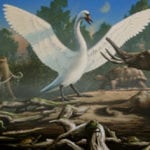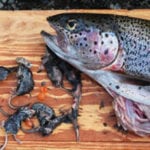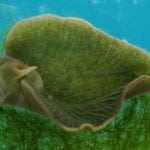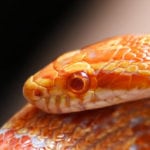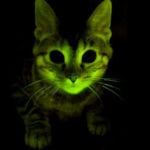 Weird Stuff
Weird Stuff  Weird Stuff
Weird Stuff  Health
Health Ten Confounding New Inventions from the World of Biomedicine
 Creepy
Creepy 10 Death Superstitions That Will Give You the Creeps
 Movies and TV
Movies and TV 10 Movies That Get Elite Jobs Right, According to Experts
 Weird Stuff
Weird Stuff 10 Times Real Laws Were Based on Bizarre Hypotheticals
 Animals
Animals 10 Inspiring Tales of Horses Being Human
 Mysteries
Mysteries Top 10 Haunting Facts About the Ghost Ship MV Alta
 History
History 10 Surprising Stories About the Texas Rangers
 Humans
Humans 10 Philosophers Who Were Driven Mad by Their Own Theories
 Miscellaneous
Miscellaneous 10 Video-Game-Worthy Weapons and Armors from History
 Weird Stuff
Weird Stuff 10 Warning Labels That Exist Because Someone Actually Tried It
 Health
Health Ten Confounding New Inventions from the World of Biomedicine
 Creepy
Creepy 10 Death Superstitions That Will Give You the Creeps
Who's Behind Listverse?

Jamie Frater
Head Editor
Jamie founded Listverse due to an insatiable desire to share fascinating, obscure, and bizarre facts. He has been a guest speaker on numerous national radio and television stations and is a five time published author.
More About Us Movies and TV
Movies and TV 10 Movies That Get Elite Jobs Right, According to Experts
 Weird Stuff
Weird Stuff 10 Times Real Laws Were Based on Bizarre Hypotheticals
 Animals
Animals 10 Inspiring Tales of Horses Being Human
 Mysteries
Mysteries Top 10 Haunting Facts About the Ghost Ship MV Alta
 History
History 10 Surprising Stories About the Texas Rangers
 Humans
Humans 10 Philosophers Who Were Driven Mad by Their Own Theories
 Miscellaneous
Miscellaneous 10 Video-Game-Worthy Weapons and Armors from History
10 Animals That Altered The Course Of History
According to Napoleon Bonaparte, “History is written by the winners.” It’s also written by us humans, which helps explain why other species are so often ignored. Actually, plenty of nonhuman individuals have had a big impact on human history. Some of the animals that shaped the course of history were nameless while others were international superstars. Whether they’re famous or anonymous, these finned, feathered, and furry creatures have been history’s pioneers, soldiers, educators, lawbreakers, and heroes. And some of them have even made it into our history books.
10 The Church Of England Goes To The Dogs

King Henry VIII of England wanted a son and heir. He’d had six children with his first wife, Catherine of Aragon, but only one little girl, Princess Mary, survived. Henry decided that since Catherine had previously been married to his older brother Arthur, who’d died of “sweating sickness” soon after the wedding, she was akin to his sister, and it had been a sin to marry her. That sin had cursed his marriage, so he and Catherine couldn’t have a living son. Of course, whether Henry believed in curses or not, he was already lusting after another woman. He wanted pretty, flirtatious Anne Boleyn in his bed as Queen, both for sons and fun. Obviously, Catherine had to go.
In 1527, Henry sent a team to Rome to explain to Pope Clement all about the sin, the curse, and how God would surely want him to annul his marriage. The team included one of his best negotiators, Thomas Boleyn, who was the Earl of Wiltshire and also Anne’s father.
But according to Foxe’s Book of Martyrs, the meeting between the Earl of Wiltshire and the Pope was a historic disaster. The problem began when Pope Clement stuck out his bare toe for the Earl to kiss—a custom that has happily disappeared. The Earl’s spaniel, feeling either protective or hungry, bit the Pope’s toe, so the Pope tried to kick him.
At that point, Boleyn decided that the bitten toe was defiled and he sure wasn’t going to kiss it, which didn’t help Henry’s petition to the Vatican. The Pope, who didn’t want to offend Queen Catherine’s powerful European relatives anyway, didn’t grant an annulment. Henry and Catherine were still married in the eyes of God.
Finally, the king found another way to get what he wanted. He simply declared himself the new head of England’s Church. Those clergymen who wanted to keep their heads on their shoulders turned their backs on Pope Clement, welcomed Henry as their new boss, and sanctified the annulment. With the aid of a chomp from the Earl of Wiltshire’s dog, the Protestant Church of England was born.
9 Montauciel Makes The First Test Flight
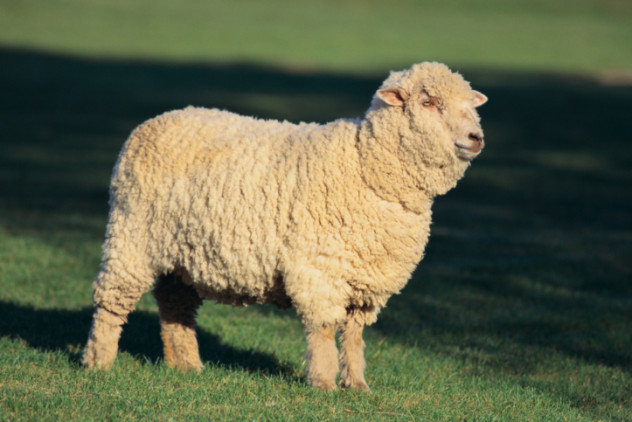
Could people survive flight at high altitudes the way birds did? That was a question that interested scientific minds in the late 1700s when hot air balloon demonstrations showed that the reliable contraptions could take passengers on flights through the air and then deposit them safely back on land again. In 1783, King Louis XVI and his queen, Marie Antoinette, presided over a large crowd that had come to see a “manned” hot air balloon demonstration at Versailles. The stars of the demonstration were a duck, a rooster, and a sheep named Montauciel. These three passengers would become the first aeronauts in recorded history.
The duck was there as a control since he was accustomed to high altitudes. The rooster was there because he was a bird that wasn’t used to high altitudes. The main focus of the demonstration was Montauciel, who—at least in the minds of the experimenters—had biological requirements fairly close to humans. The scientists believed that if Montauciel could survive the flight, it was likely a man could, too.
The balloon was glamorous, sky blue, and decorated with gold royal insignias and signs of the zodiac. Even better, it could fly. It traveled about 1.5 kilometers (2 mi) and reached a height of about 450 meters (1,500 ft) before landing. When observers reached Montauciel, he was calmly eating. At first there was some concern about the rooster, which had a broken wing, until witnesses said that Montauciel had kicked the poor guy before takeoff. So the experiment was a success, and as Montauciel munched on grass, he was ensuring that the next manned balloon flight would carry human beings.
8 A Fishy Victory

Sometimes it’s a lowly, unknown soldier whose sacrifice wins a battle. That’s exactly how it was in 1801 in the Battle of Copenhagen—but this time, the unknown soldier was a fish.
The Battle of Copenhagen was a naval battle between Britain and Denmark. It was part of Britain’s effort to hold back the rise of Napoleon with a naval blockade of France. Denmark had joined with other nations in a “League of Armed Neutrality” that insisted on free trade with France. Because Britain wasn’t about to lose their blockade against Napoleon, they tried to break up the League, beginning with Denmark.
They sent a fleet to the area under the command of Admiral Hyde Parker, who was expected to use force against the Danes if no negotiated agreement could be reached. However, the 60-year-old British admiral Parker was a very cautious man. After all, he’d just married a pretty 18-year-old, so he wasn’t eager to go to battle. Hyde’s second-in-command, Admiral Horatio Nelson, was eager to attack before the Danes built up their navy to the point that victory would become impossible.
Hyde didn’t trust the aggressive Nelson. He refused to follow any of Nelson’s suggestions and deliberately kept him out of any plans or negotiations. Until a turbot (a large, European flatfish) came to the rescue, that is. One stormy night, while passing through an area called “Dogger Bank,” Nelson and his crew went fishing because the area was known to produce much tastier turbot than those swimming off the coast of England. The crew caught a large, tasty-looking turbot. Nelson insisted that a boat immediately take the fish to Admiral Hyde, who “liked his luxuries.”
Obviously, Nelson was hoping that the turbot would please Hyde enough to improve their relationship, and luckily for the British, the fish succeeded in its mission. Nelson was able to influence events, and in addition he received a squadron of his own ships. This was all Nelson needed to launch—and win—the Battle of Copenhagen. But he didn’t do it alone. As his friend Lieutenant Layman later said, “Your lordship . . . gained the victory by a turbot.”
7 This Little Piggy’s War
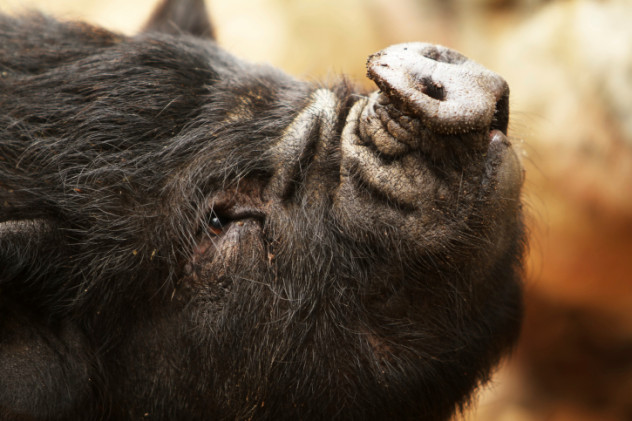
The Pig War began when a hungry British black boar stole a banquet of potatoes from an American farmer on the San Juan Islands located in the Puget Sound in the Pacific Northwest. The San Juans were lush and beautiful, but tensions between its residents were high—as the robber pig soon learned.
The 1846 Treaty of Oregon that had established the Northwest border between the United States and Canada declared that the border ran through “the middle of the channel” separating the US mainland from Canada’s Vancouver Island. The problem was that there were really two channels separating the nations, and the San Juan Islands were smack in the middle of those. Each country claimed that the confusing treaty gave the San Juans to them. Britain’s Hudson’s Bay Company established a large sheep farm as their claim on the Islands while American homesteaders set up small farms.
Lyman Cutlar was an American homesteader who built a cabin and planted a large potato patch on his claim. As far as the Hudson’s Bay Company was concerned, Cutlar’s farm was inside their sheep pasture. As far as Cutlar was concerned, the Brits and their livestock were trespassers on his acreage. On June 15, 1859, when Cutlar found a Hudson’s Bay pig rooting and gobbling up tubers in his potato patch, he grabbed his rifle and killed it. This meant war.
Angry Brits threatened to arrest Cutlar and remove all the American settlers from the islands. Equally angry Americans demanded military protection, which arrived with about 60 United States infantrymen led by Captain George Pickett, who later gained fame as a Confederate General. When American soldiers landed, the Governor of Vancouver sent gunships and Royal Marines to scare them off, but Captain Pickett dug in his heels and called for reinforcements. These he got—along with cannons. Meanwhile, the British acquired more ships and marines.
All that summer, both sides did military exercises to show off their firepower and subsequently impress the summer tourists. The military standoff continued until word reached President James Buchanan, who put the kibosh on going to war to defend a pig murder. Instead, he sent a negotiator to the San Juans and soon most of the troops on both sides withdrawn. From then on, the San Juans remained peaceful under joint military occupation until 1872, when an international arbitration committee gave the territory to the Americans.
Today, the Pig War is considered a cautionary tale of how quickly hotheads start conflicts, and also how international negotiations can lead to permanent peace. Sadly, peace came too late for the war’s one and only casualty—that black boar. Still, he remains the star of one of the most famous almost-wars in Northwest history.
6 Jim’s Lessons
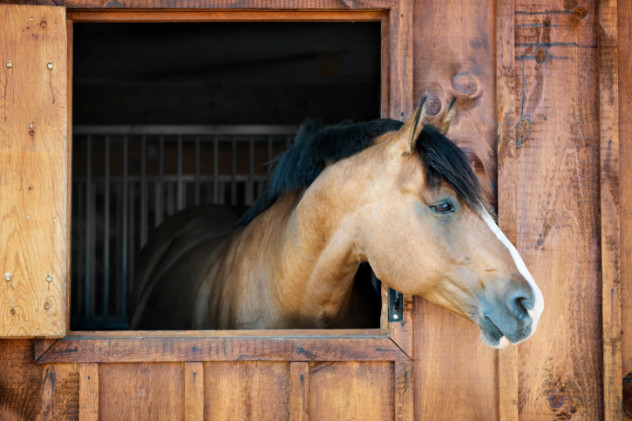
For years, a horse named Jim pulled a milk wagon along the streets of St. Louis, Missouri. In 1898, he got a more sedentary job. Like other horse-heroes in the United States, Jim was periodically injected with diphtheria toxin.
At that time, diphtheria was a deadly disease for humans and the most common killer for children aged 2–14, but it was an illness that most horses could survive without a great deal of discomfort. Once injected with diphtheria toxins, horses like Jim produced antibodies that made their blood a life-saving serum when it was injected into diphtheria patients.
In three years, Jim produced over 30 quarts of serum and saved countless lives. In 1901, he contracted tetanus and had to be euthanized. If that wasn’t sad enough, 13 children died of tetanus because they’d all been injected with Jim’s infected blood, which was sold without being tested or inspected.
The tragedies caused by Jim’s infected blood were a major motivation for the passage of the 1902 Biologics Control Act, which gave the government power over the licensing of vaccines, antitoxins, and all biologic products, pushing medicine into a more modern era. Things that we take for granted now like government regulations, laboratory inspections, qualified scientists to oversee production, and even expirations dates on labels, are all a result of the Biologics Control Act.
Over a century later, Jim’s story is still considered important to public health. A clinical trials manual published in 2011 by the Duke Research Institute is subtitled Lessons From A Horse Named Jim.
5 Elsa Goes Wild
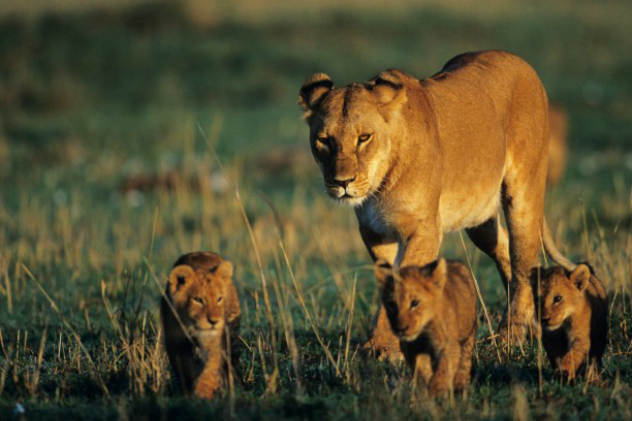
In 1956, George Adamson, the Senior Game Warden of Kenya’s Northern Frontier District, was attacked by a lioness. He shot her in self-defense. When he discovered that the lion was a mother protecting three cubs, George took the orphans home so that he and his wife Joy could care for them until they could be placed in a zoo.
Two of the cubs did wind up in zoos, but Joy couldn’t part with the one she named Elsa. At that time, raising a lion as a companion was thought to be impossible since lions were considered cruel killing machines. The Adamsons never lost respect for Elsa’s need and ability to kill, but they also loved her affectionate personality. Elsa was devoted to them and part of the family.
By the time Elsa was three, she was a powerful lioness who could easily get into trouble, so the Adamsons did something else that was thought to be impossible. They took her into a remote area of Kenya’s Meru National Park, where George taught Elsa to hunt and fend for herself. She became the first captive lion ever successfully freed into her natural environment.
From then on, Elsa lived in the wild, though she would sometimes visit the area of Meru Park where her former guardians lived. Elsa brought her three cubs along on one visit, and the Adamsons knew she’d adapted to her new life.
In 1961, Elsa died from tick fever, but her influence was only beginning. Joy wrote the book Born Free to tell Elsa’s story. It was a worldwide best seller published in 24 languages and was made into a blockbuster movie in 1966. So many millions of readers and viewers around the world fell in love with kindly, playful Elsa that she changed an entire generation’s feeling toward lions. No longer considered vicious killers that should be isolated in cages and beaten into submission, lions were seen as individual beings who should be free to live out their lives in the wild.
Inspired by Elsa, George became a full-time teacher of captive lions, training them to survive in the wild. One of George’s most famous students was the affectionate Christian who became the leader of his own pride and also the star of one of Time Magazine’s 2008 Top 10 Viral Videos. Virginia McKenna and Bill Travers, the married couple who played the Adamsons in the Born Free film, were so moved by that experience that they founded an international organization to free captive wildlife and protect it from human cruelty.
4 The Last Of The Billions
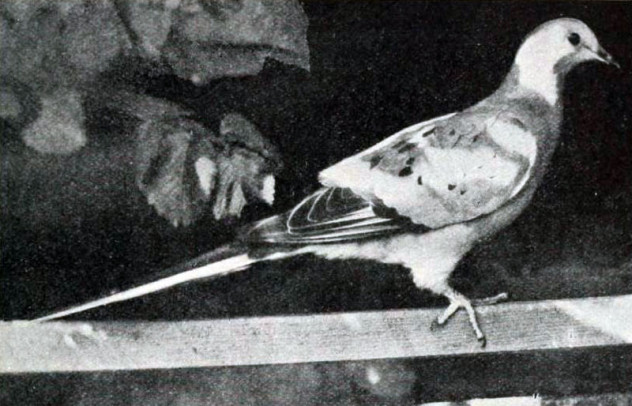
On September 1, 1914, a passenger pigeon named Martha died in her cage at the Cincinnati Zoo at the estimated age of 29. There was no official national day of mourning for Martha, but it was one of the saddest events in the country’s history, a day that still inspires people to become conservationists a century later.
Named for George Washington’s wife, Martha was the last surviving passenger pigeon. In 1860, there had been billions of passenger pigeons in North America. They traveled in such large flocks that they could blot out the sun, and the beating of their collective wings caused changes in the atmosphere. There were so many of them that it seemed like passenger pigeons would always be around. They were hunted for their meat and often slaughtered simply because they were a nuisance. By the 1900s, there were very few of them left. When Martha died, the birds were officially extinct.
Martha was born in captivity and probably sent to the Cincinnati Zoo in 1902. There, she joined a small group of her relatives. It was hoped that the flock would survive, but the birds had only one chick a year and didn’t breed well in captivity. After all the other captive birds died out, Martha was alone. She became a symbol of the billions of birds that would never darken American skies again. When she died, her body was immediately frozen into a block of ice and shipped to the Smithsonian. She’s still there, carefully preserved.
At that time, no one knew that the loss of Martha and her relatives would change the continent. One result is said to be a population explosion of deer mice that feed on the acorns that passenger pigeons also ate. Deer mice are the main reservoir of painful, debilitating Lyme disease, which is now one of the fastest-growing epidemics—and a kind of pigeon revenge.
Even in 1914, Martha’s death was big environmental news. There were arguments over whether people really caused such a massive loss of birds in just 50 years. Some deniers claimed that the passenger pigeons had changed their appearance and were hiding out in South America. Fortunately, not everyone denied the human impact on the environment, and Martha’s death inspired a new push for conservation and laws to protect birds and other endangered species. These days, Martha is again part of a national debate: Should the DNA of preserved passenger pigeons like Martha be used for cloning to bring the birds back again, or should we leave nature alone?
3 David Greybeard Goes Fishing
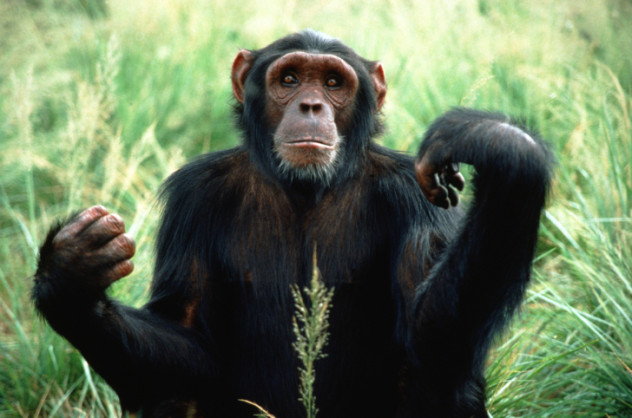
In July 1960, Jane Goodall arrived in what is now Gombe National Park in Tanzania. She’d come to study wild chimpanzees that were still mysterious animals.
Today, Goodall is one of the most famous scientists in the world. Few people know that her study didn’t get off to a good start. During her first three months at Gombe, she felt she’d learned nothing about the shy chimps that wouldn’t let her observe them even from a distance. She worried that her grant funds, which would soon run out, probably wouldn’t be renewed, and she’d have to leave Africa without learning much about chimpanzees.
Fortunately, there was one chimp that didn’t mind Jane watching him. She named him David Greybeard because of his gray chin whiskers. In October 1960, David Greybeard gave Jane her first important discovery when she observed his sharing bush pig meat with a female. Chimps were thought to be vegetarians, so David Greybeard had proved one human assumption wrong.
Cheered by her discovery, Jane continued to observe David. About a month later, she saw him poking grass into a termite mound and then raising the grass to his mouth. Puzzled, Jane waited until he left the area, then tried imitating him. When she poked grass into the termite mound, the termites bit and held onto the blade like a fish on a line. David had been using the grass as a tool to fish for termites.
David Greybeard was one of the first animals to clearly demonstrate the ability to use tools—even though scientists claimed that only humans could make and use tools. The discovery was so important that Jane’s grant was renewed and she remained at Gombe, where she later watched David Greybeard make primitive tools for termite-fishing by stripping the leaves off twigs.
David Greybeard changed the scientific view of chimps and humans. The renowned archaeologist and paleontologist Louis S. B. Leakey famously summed up the importance of David’s abilities this way: “Now we must redefine ‘tool,’ redefine ‘Man,’ or accept chimpanzees as humans.”
2 Echo’s Reality TV Show
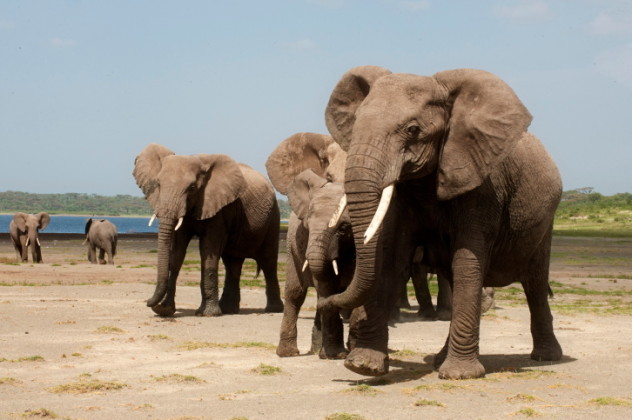
Born in Kenya’s Amboseli National Park in 1945, Echo became the most famous elephant in the world. From 1973 until her death of old age in 2009, Echo was followed by biologists, and much of what we know today about African elephants has come from observations of Echo. From 1990 on, she was also followed by film cameras from the BBC.
Female elephants—mothers, grandmothers, sisters, cousins, siblings, and children—band together. Echo was the leader of her family’s herd and used all her knowledge and experience to keep them alive in the dangerous world of lions, drought, and deadly human neighbors. The camera recorded Echo saving her calf, Ely, who was born with crooked front legs and couldn’t stand. Instead of abandoning him, as the humans expected, Echo encouraged and nurtured him. When she foraged, she moved very slowly so that Ely could crawl beside her until his legs grew flexible enough for him to stand.
The camera also caught Echo’s reaction when her daughter was kidnapped by a rival herd. Exhibiting the wise leadership that she was famous for, Echo organized her largest elephants into a team. As her team charged the kidnappers, Echo rescued her daughter.
Watching her story, viewers admired Echo’s wisdom and devotion as she guided and protected her family through the worst drought in Kenya’s history. By 2009, the year of Echo’s death, the herd had grown from 7 to 40 elephants. She’d done a good job for her family, and even after her death, they profited from the lessons she’d taught them. As millions of admiring viewers watched Echo overcome disasters that would devastate many humans, she became one of the most beloved television stars in the world.
Echo’s remarkable character still inspires people to work to protect endangered elephants. She taught scientists and the public that elephants have intense family bonds and emotional attachments. Her story still raises support for the movement to both protect elephants in the wild and rescue them from the emotional suffering of captivity in circuses and zoos.
1 Snowball Catches A Killer
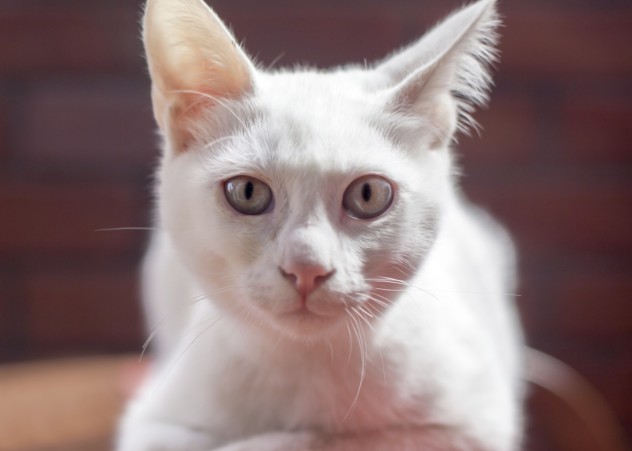
“Purr-fect Match.” “CAT-astrophe for Criminals.” “Fur-ensic Evidence.” These were the groan-inducing headlines inspired by Snowball, the cat who gave the evidence for a murder conviction. On October 3, 1994, Shirley Duguay of Prince Edward Island vanished. Less than a week later, her car was found a few miles from home spattered with her blood. Within a few months, her body turned up in a shallow grave.
Suspicion centered on Duguay’s estranged, common-law husband, Douglas Beamish, who was known to be violently abusive. Even though Constable Roger Savoie believed Beamish was the murderer, he didn’t have enough evidence to make an arrest. Then a man’s leather jacket was found in the woods with Duguay’s blood on it. Savoie tried to link the jacket to Beamish.
During his visit to Beamish’s latest residence, the Constable had noticed Snowball, the family’s white cat. The bloody jacket had white cat fur on the lining, and Savoie immediately tried to get the cat hairs tested for DNA so they could be compared to Snowball’s DNA. He ran into an unexpected problem. The use of DNA identification was still new. No laboratory had ever analyzed a pet’s DNA as forensic evidence, and none of them wanted to be the first to try.
Constable Savoie finally got help from a geneticist at the United States Cancer Institute who was an expert in feline DNA. Testing showed that Snowball’s DNA matched the DNA of the cat hairs, but there was still a problem. What if all the neighborhood cats had similar DNA because they all lived on an island? Perhaps they were inbred. Determined to get his man, the constable had blood collected from about 20 cats in Snowball’s neighborhood and had it all tested. The findings showed enough genetic diversity for Snowball’s fur to be incriminating evidence.
Beamish was convicted. Since then, other convictions have arisen from pet DNA and scientists are establishing pet DNA databases to catch more crooks.
Sue Steiner is the author of Mom’s Bathtub Reader and the upcoming book, Amazing Moms Who Changed The World. As a major contributing writer to over 20 books for Uncle John’s Bathroom Reader she’s learned a little bit about a lot. You can reach her here or

